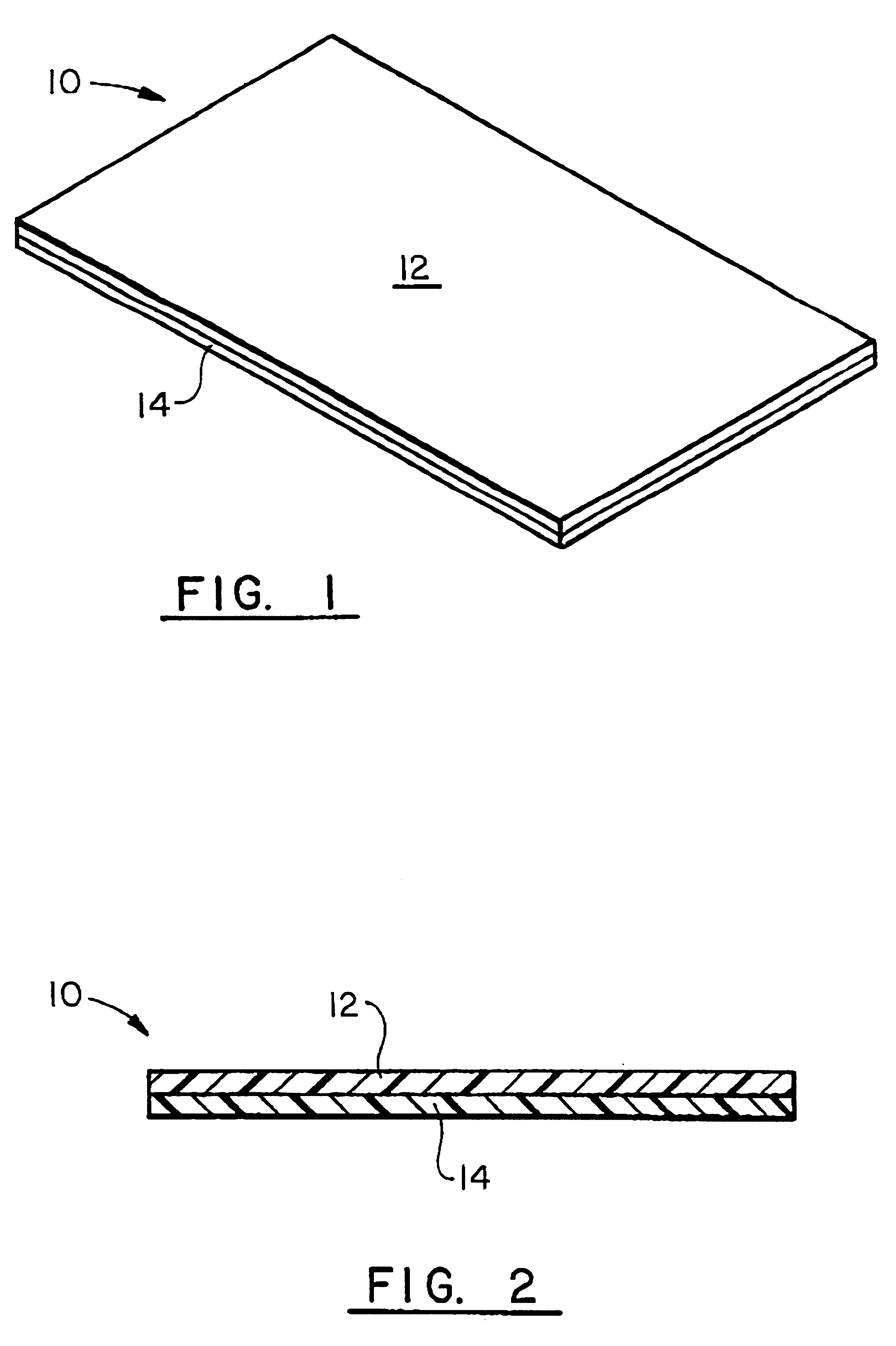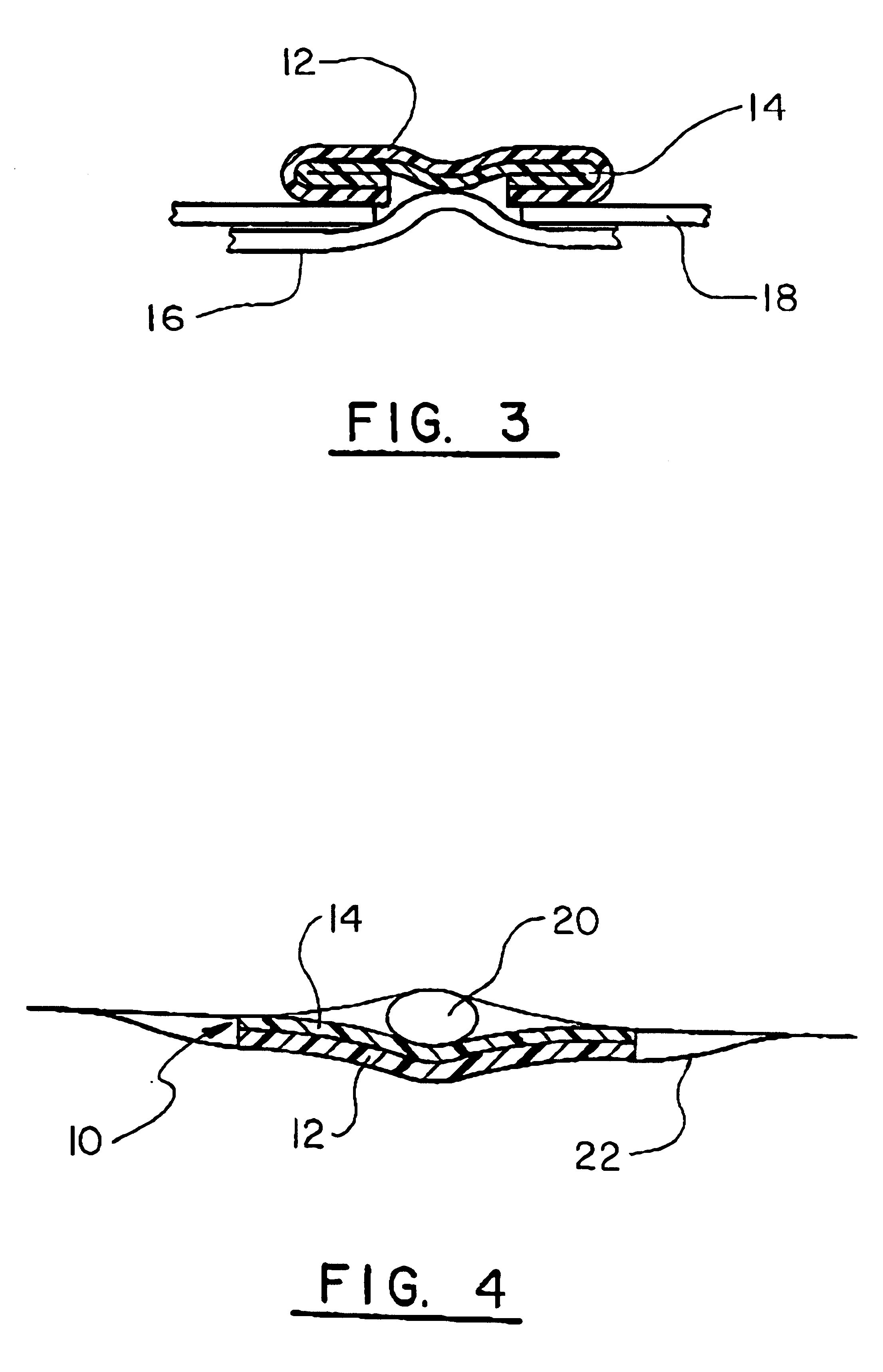Method of repairing inguinal hernias
a mesh prosthesis and inguinal hernia technology, applied in the field of mesh prosthesis, can solve the problems of unwanted adhesion of the abdominal viscera, increased difficulty in "reopening" the patient, and danger of injury to the abdominal viscera
- Summary
- Abstract
- Description
- Claims
- Application Information
AI Technical Summary
Problems solved by technology
Method used
Image
Examples
Embodiment Construction
FIG. 1 illustrates a universal, surgical mesh prosthesis 10 is in the form of a foldable sheet which is particularly well adapted for hernia repair. Consequently, the mesh prosthesis 10 is also referred to as a universal hernia patch. The mesh prosthesis 10 can be formed as a rectangular sheet, as shown in FIG. 1, in a large range of sizes. Additionally, the mesh prosthesis 10 may be preformed as circles, ellipses or any particular shape desired as demonstrated in FIGS. 6a-6c. Furthermore, the foldable mesh prosthesis 10 may be easily cut to the size needed for the particular operation. However, sizing the mesh prosthesis 10 appropriately to the more generally useful or utilized configurations, minimizes the trimming of excess material saving valuable operating time.
As shown in FIG. 2, the mesh prosthesis 10 includes an outer layer 12 formed of a material adapted to promote biological tissue adherence thereto. The outer layer 12 promotes fibroplasis. The first outer layer 12 may eff...
PUM
 Login to View More
Login to View More Abstract
Description
Claims
Application Information
 Login to View More
Login to View More - R&D
- Intellectual Property
- Life Sciences
- Materials
- Tech Scout
- Unparalleled Data Quality
- Higher Quality Content
- 60% Fewer Hallucinations
Browse by: Latest US Patents, China's latest patents, Technical Efficacy Thesaurus, Application Domain, Technology Topic, Popular Technical Reports.
© 2025 PatSnap. All rights reserved.Legal|Privacy policy|Modern Slavery Act Transparency Statement|Sitemap|About US| Contact US: help@patsnap.com



